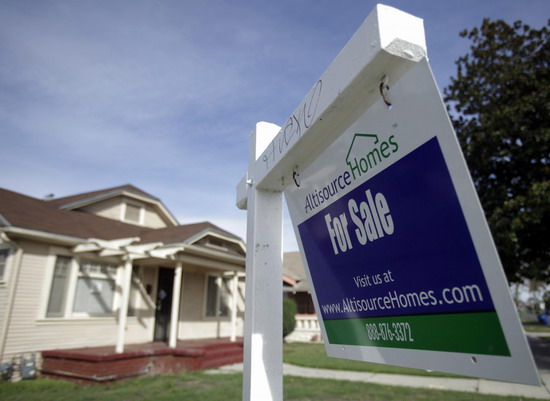Asia-Pacific
US mortgage program largely fails: panel
(Agencies)
Updated: 2010-12-14 14:10
 |
Large Medium Small |
|
 In this October 25, 2010 file photo, a home for sale is seen in Los Angeles, California. [Photo/Agencies] |
WASHINGTON- The US Treasury Department failed to effectively administer a program intended to help troubled homeowners and squandered a chance to redesign it so it would be more useful, a congressional watchdog panel said in a harshly critical report released on Tuesday.
As a result, more homes will be lost to bank foreclosures.
"If current trends hold, HAMP will prevent only 700,000 to 800,000 foreclosures -- far fewer than the three to four million foreclosures that Treasury initially aimed to stop, and vastly fewer than the eight to 13 million foreclosures expected by 2012," the oversight panel said in a report.
HAMP was set up under the $700 billion bailout fund created to cope with the 2007-2009 financial crisis.
A senior Treasury official, Acting Assistant Secretary for Financial Stability Tim Massad, said in a conference call that he considered the report "somewhat unfair" for not giving more credit for the 500,000 permanent modifications now in place.
"It's important to recognize what has been accomplished. That's a lot of people," Massad said, adding the HAMP program has spurred some banks to create their own programs to lighten mortgage holders' burdens.
HAMP has come under tough scrutiny from the watchdog panel previously, but the panel sounded specially aggrieved this time that Treasury didn't try to redesign the program before its authority expired on Oct 3 to spend money from the government's $700 billion bailout fund.
HAMP Unlikely to Improve
"Because Treasury's authority to restructure HAMP ended on Oct 3, 2010, the program's prospects are unlikely to improve substantially in the future," the panel concludes, adding this meant it "has failed to help the vast majority of homeowners facing foreclosure."
Though money can no longer be distributed from the Troubled Asset Relief Program for bailouts and mortgage relief, the oversight panel stays in business through April 3, 2011. It issues monthly reports on specific topics like foreclosures.
Congressional attention has focused on perceived abuses stemming from banks' use of "robo-signers" to initiate huge volumes of home takeovers -- especially galling to lawmakers who note banks received billions of dollars in taxpayer-financed aid during the crisis.
In a telephone conference call, Senator Ted Kaufman, who chairs the Congressional Oversight Panel, said Treasury as well as Fannie Mae and Freddie Mac need to "bear down on the servicers" to make them more willing to modify loans.
He also said HAMP could still be usefully updated through measures like enabling borrowers to apply for modifications more easily by applying online instead of assembling mounds of paperwork to mail in.
Treasury Secretary Timothy Geithner is scheduled to testify before the oversight panel on Thursday and is likely to get a grilling on foreclosures as well as other programs aimed at getting the economy onto sounder footing.
No Clear Goals
In its report, the panel said Treasury "refused to specify meaningful goals by which to measure HAMP's progress, while the program's sole initial goal -- to prevent three to four million foreclosures -- has been repeatedly redefined and watered down."
Those were not the only shortcomings it listed.
"Treasury has also failed to hold loan servicers accountable when they have repeatedly lost borrower paperwork or refused to perform loan modifications," the panel said. It said Treasury should also be specially monitoring -- and if necessary intervening -- to prevent re-defaults of modified loans.
It said Treasury "essentially outsourced the responsibility for overseeing servicers to Fannie Mae and Freddie Mac, but both companies have critical business relationships with (the) very same servicers, calling into question their willingness to conduct stringent oversight."
The panel also charges that Treasury has been misleading about the amount of money that will be devoted to foreclosure modification efforts, saying it is far less than the $30 billion the department had claimed.
"Given the panel's cost estimates for Treasury's other foreclosure-related efforts, HAMP thus appears likely to spend only around $4 billion," the report said.
If Treasury had "acknowledged this reality before its crisis authority expired," it would at least have had a chance to revamp the program to make it more effective, the report said.



